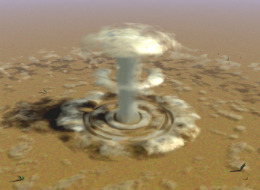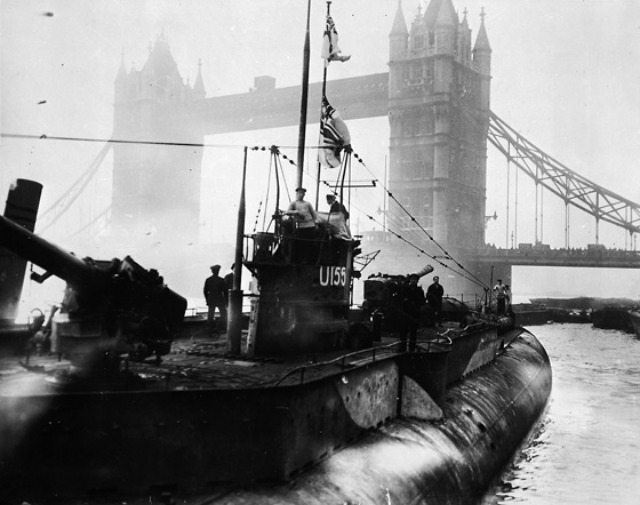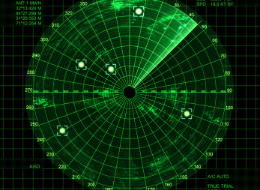Eleven True Fantastic Predictions

Much of what the science fiction writers wrote dozens (or even a hundred) years ago, has already entered our world in detail: submarines, atomic bombs, iPad. Some excerpts from the works of NF surprisingly accurately describe things that the authors themselves could only get acquainted with in their imagination.
This raises discussions among NF fans, to which Eric Rabkin, a professor at the University of Michigan, winner of the 2010 Pilgrim Award for contribution to the study of fiction, states:
“Firstly, there is the problem of endless monkeys. If you have an infinite number of them, moreover armed with typewriters, then according to the theory of probability, at least one will write Hamlet. Transferring this knowledge to science fiction authors, thousands of them, and tens of thousands of visions they created, we again get a high probability that they will predict some inventions with one hundred percent accuracy. ”
')
Below is a list compiled with the help of members of the Association of Researchers of Science Fiction , which should best reflect the high degree of identity of the fantastic descriptions with their real incarnations.
1. iPad: 1968

Many giggled when at the beginning of the year Apple announced an iPad. Someone talked about his excessive femininity. However, Arthur Clark had the same opinion as future developers had when he invented “Newspad”.
2001: A Space Odyssey, Arthur Clark:
Charter to read official reports, memorable notes and protocols, Floyd included his newspaper tablet in the ship’s information network and looked through the world's largest electronic newspapers one by one. He remembered their code signals by heart, and he didn’t even have to look at the back wall of the tablet, where their list was printed.
Turning on the tablet's short-term storage device, he delayed the image of the next page on the screen, quickly ran through the headlines and noted articles that interest him. Each article had its two-digit code number - once you typed it on the tablet keyboard, like a tiny rectangle of the article, it instantly increased to the size of a screen as large as a sheet of writing paper, providing complete readability. After reading one article, Floyd again included the entire page and chose another.
2. Tanks: 1903

The first tank appeared in 1916, but thirteen years earlier, HG Wells, possibly inspired by Leonardo da Vinci , describes the battle scene in this way.
The land of armadillos, HG Wells (in the only available translation it is called "Land Armadillos" - approx. Lane.):
"Vit-Vit-Vit" - whistled overhead; the artist rushed to seek refuge, the correspondent behind him. The shrapnel hit - very close, almost at arm's length; the men fell into some kind of recess and pressed into the ground. Then the light and noise went to the side, and the hill remained in a dark, mysterious night.
The correspondent rose and barked a curse.
- What the hell is bringing down our soldiers?
- It is black - said the artist - and it looks like a fort. Two hundred yards from our first line.
He looked for comparisons.
“Something like a big blockhouse or a giant, inverted bowl.”
- And it moved! - exclaimed war correspondent.
“You imagined what was moving — the illusion of searchlight rays, a nightmare crouching.
They crawled to the edge of the groove and now lay in the immense darkness. For a while, absolutely nothing was visible, then the spotlights on both sides again converged on a strange object.
Pale light revealed something like a huge, awkward insect - a beetle, the size of an armored cruiser; it crawled right onto the first line of trenches and hit fire through the side cannon ports. The bullets drummed across his shell like a furious hail across the iron roof.
3. Virtual Reality Games: 1956

The first video game appeared in 1958, and the same Arthur Clark describes virtual reality two years earlier.
City and stars, Arthur Clark:
Among the thousands of forms of entertainment that existed in the city, the sagas were especially popular. The entrance to the saga did not make him a passive observer, as in the imperfect acts of the past, which Alvin sometimes watched. He was an active participant, possessing - at least so it seemed - freedom of choice.
Events and scenes that served as the source material for adventure could have been prepared by artists who had long been forgotten, but were quite flexible and allowed all sorts of changes.
In these ghostly worlds in search of adventures absent in the Diaspar, one could go with his friends. And while the dream lasted, it could not be distinguished from reality.
4. The atomic bomb: 1914

Although the term “atomic bomb” already existed by the time Welles wrote the novel “The World Liberated”, there is a serious possibility that he came to him and later popularized by describing the mechanism of action long before the actual appearance of the bomb.
Leo Szilard, a participant in the Manhattan Project: “It is noteworthy that Wells wrote these lines in 1914. The forecasts of writers can sometimes be more accurate than the forecasts of scientists. ”
The world freed, HG Wells:
The problem that scientists such as Ramsey, Rutherford and Soddy worked at the very beginning of the 20th century — the problem of causing the radioactive decay of heavy elements that would open access to the internal energy of the atom — was due to the rare combination of scientific thinking, intuition, and lucky chance Allowed by Holsten as early as 1933.
Meanwhile, the year when radioactivity was first discovered, and its first practical application passed a little more than a quarter of a century. However, over the next twenty years, all sorts of minor difficulties prevented Holsten's discovery from being used for broad practical purposes.
However, the main thing was accomplished - this year a new frontier on the path of human progress was overcome. Holsten caused atomic decay in a tiny particle of bismuth; there was a strongest explosion, which resulted in a heavy gas with extremely high radioactivity — it broke up in a week, in turn, and Holsten took another year to clearly demonstrate that the end result of this decay is gold.
But the main thing was done - at the cost of a burn on his chest and a broken finger - and from that second, when an invisible piece of bismuth turned into a clot of destructive energy, Holsten already knew that he had opened the path for humanity — albeit still narrow, tortuous and dark — to the infinite, inexhaustible power.
5. Cubicles: 1909

Although we recognize that most of the workplaces are not hexagonal in shape and have no built-in chair, the hive remains a hive, in which we spend our days lit by fluorescent lamps.
The car stops, Edward Forster:
Try to imagine an octagonal-shaped little room resembling a honeycomb cell. There are no lamps or windows in it, but all of it is flooded with soft radiance. There are no ventilation holes either, but the air is fresh and clean. And, although there is not a single musical instrument to be seen, at that moment when I mentally introduce you here, gentle and melodious sounds are flowing towards us.
In the middle of the room there is an armchair, next to a nimpuitre, that's all the furniture. In a chair there is some formless, swaddled carcass - a woman not more than five feet tall, with a gray, like a mold, face. This is the mistress of the room. The bell rings. The woman presses a button and the music stops. “There’s nothing you can do, you’ll have to see who’s there,” the woman thinks and, pressing another button, sets the chair in motion. It slides to the opposite wall, from where there is still an insistent bell.
- Who is it? Shouts a woman.
There is annoyance in her voice ... for the umpteenth time she is prevented from listening to music. She has several thousand acquaintances - in a certain sense, communication between people has incredibly expanded. But when the answer comes, her sallow face spreads into a wrinkled smile. - Good. Let's talk, she agrees. - I'll turn off now. I hope that nothing will happen in five minutes. I give you five minutes, Kuno, and then I have to give a lecture on music in the Australian period.
6. Headphones: 1950

In 1950, Bradbury described the headphones as follows.
451 degrees Fahrenheit, Ray Bradbury:
In her ears tightly inserted miniature "shells", tiny, with a thimble, radio receivers, and electronic ocean of sounds — music and voices, music and voices — washes the shores of her awake brain in waves. No, the room was empty. Every night an ocean of sounds burst in and, seizing Mildred on his broad wings, loudly and swinging, carried her away, lying with open eyes, towards the morning.
7. Video chat: 1911

AT & T in 1964 at the World's Fair in New York, demonstrates its “picturephone”. The very first webcam showed a coffee pot in the University of Cambridge. Skype appeared in the 2003rd year.
Ralph 124C 41+, Hugo Gernsbek:
Ralph went to the telephoto fixed on the wall, pressed a few buttons, and after a while the screen of the device lit up. A clean-shaven and rather attractive face of a man of about thirty appeared on it.
When he recognized Ralph in his telephoto, he greeted him with a smile:
- Hi, Ralph!
- Hello, Edward. Come to my lab tomorrow morning. I'll show you something exceptionally interesting. By the way, look better now!
Ralph stepped aside so that his friend could see the device on the table. This device was located about ten feet from the telephoto screen.
8. Automatic doors: 1899

Depending on who you ask about the invention of automatic doors, you will be called either Heron of Alexandria (beginning of the era) or Dee Horton and Lew Hewitt, 1960 (I think the most popular answer is omitted here)
When the sleeper is waking up, HG Wells:
Two strangers obeyed and, looking at Graham for the last time,
turned to leave, but instead of going out under the archway, they headed towards the opposite wall. Then something strange happened: a part, apparently of a completely blank wall, split apart with a crash and, twisting like a blind, went up and sank behind the departed. Graham was left alone with
a newcomer and a Russian-bearded man in a purple robe.
9. Escalators: 1940

Although this example is often cited, it is not quite correct, since the patent for the similarity of an escalator was filed in 1892, and the prototype is shown at the International Colombian Exhibition in 1893.
Roads should roll, Robert Heinlein:
They descended the electrical stairs and entered a footpath that bounded a lane running north at a speed of five miles per hour. Having rounded the entrance to the tunnel with the pointer “THE ROUTE TO THE SOUTH ROAD”, they stopped at the edge of the first lane.
- you had to ride on the conveyor? - asked Gaines. - It's very simple. Step on the strip face to meet the movement.
Moving from tape to tape, they began to make their way through the crowd of hurrying people. In the midst of a twenty-mile strip, they came across a transparent partition, almost reaching the roof. Blekinsop raised his eyebrows in question.
“These are windbreakers,” Gaines answered the silent question and rolled the door aside, inviting his companion to go on. “If we didn’t have a way of separating the air flow from the lanes at different speeds, then on the statile lane, the wind would have torn all your clothes.
During the conversation, Gaines constantly had to bend over to Bleckinsop to overshadow the whistle of the wind, the noise of the crowd and the muffled roar of cars hidden under the strip below. As it approached the middle of the road, the combination of these noises made conversation impossible.
They passed three more trolls located on forty, sixty, and eighty-mile lanes, and finally made it to the fastest, most stable strip that ran from San Diego to Reno and back in twelve hours.
10. Submarines: 1869

Another fact similar to escalators is that Vern described his Nautilus, according to Rabkin, actually based on information about the boat successfully used by the Confederation for military purposes five years before writing the novel.
But even with this in mind, Vern still predicted what place such vessels took in our world, such as their political significance, as well as psychological aspects of staying on such a boat.
Twenty Thousand Leagues Under the Sea, Jules Verne:
The fact is that from some time many ships began to encounter some long, phosphorescent, spindle-shaped object at sea, far exceeding the whale in size and speed of movement. The entries made in the logbooks of various ships are remarkably similar in describing the appearance of a mysterious creature or object, unheard of speed and the strength of its movements, as well as the characteristics of its behavior.
If it was a cetacean, then, judging by the descriptions, it exceeded the size of all representatives of this order that are still known in science. Neither Cuvier, nor Laseped, nor Dumerelil, nor Katrfage would have believed in the existence of such a phenomenon without seeing it with his own eyes, or rather with the eyes of scientists.
Leaving aside too cautious assessments, according to which the notorious creature was no more than two hundred feet long, rejecting the obvious exaggerations that it was drawn by some giant — one mile wide, three miles long! - nevertheless, it was necessary to admit, adhering to the golden mean, that a strange beast, if only it exists, substantially exceeds the dimensions established by modern zoologists.
11. Radar: 1911

According to Rabkin, for the first time, the principles of radar were described so precisely and precisely by this author.
Ralph 124C 41+, Hugo Gernsbek:
If the impulses of polarized electromagnetic waves are directed at a metal object, they will be reflected from it, as the light beam is reflected from a shiny surface or from a mirror. However, the reflection coefficient of different metals is not the same. So, if the reflection coefficient of silver is taken as 1000 units, then for iron it will be 645, for alomagnia - 460, etc.
Therefore, if the generator radiation is directed into space, then using the parabolic reflector shown in the drawing, the waves will go in the direction indicated by the arrow in the diagram. If you turn the device like a searchlight, the waves will cover a huge area. Sooner or later they will meet with the interplanetary ship.
A small part of these waves, reflected from the metal case, will return back to the apparatus. Here they are intercepted by an actinoscope, which responds only to reflected waves and is insensitive to direct ones. The Actinoscope allows us to determine the reflection coefficient and, according to it, the kind of metal that reflected the waves.
According to the intensity of the reflected pulses and the time of their passage, you can very accurately and quickly calculate the distance from the Earth to the spacecraft.
via mashable.com
Note: the translation of literary quotations in the article is taken from already published Russian texts.
Source: https://habr.com/ru/post/105044/
All Articles